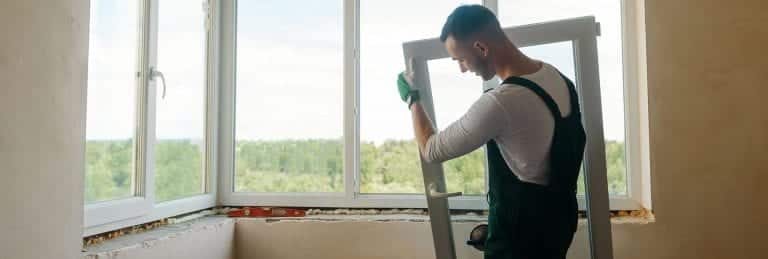6 Ideas to Make Your Pet Feel at Home

Whether you’re welcoming a pet into your home for the first time or moving into a new residence with your four-legged companion, pets need time to acclimate to new environments. Moving can be an incredibly stressful event for our furry friends. As pet parents, ensuring their comfort, health, and wellness is our responsibility.1
Luckily, there are some surefire ways to help your pet feel at home in their new home. From giving your pet their own space to become accustomed to the new environment to establishing a comforting routine, here are our favorite ways to help make your pet feel at ease wherever you are.
#1 Give Them Their Own Space
While your dog’s slobbery kisses and your cat’s insistent head nuzzles may make it seem as though they don’t want personal space, providing your pets with a dedicated area within your home is paramount to establishing their comfort. A cozy, quiet space they know is their own gives your furry friends a haven to turn to if they become overstimulated or anxious.
If you’re a dog parent, crate training provides the perfect opportunity to give your pup this space. With effective crate training, you can:
- Teach your dog that their crate is a sanctuary, not a punishment
- Communicate that their new environment is a safe place (since their crate is there)
- Give yourself peace of mind knowing your dog is safe in their crate whenever you leave the house
For non-canine companions, consider creating a dedicated room or floor space for toys, soft blankets, equipment (such as cat trees or bird perches), and food. Having a dedicated space will reassure your pet that they’re welcome in a new home.
#2 Create Pet Doors for Easy Access
While a dedicated space can help your pet feel at ease in a new home, giving them some freedom to roam is essential for establishing comfort. If you have a pet who’s allowed indoors and outdoors, installing pet doors will provide them with easy access to the backyard, the balcony, the garden, or any enclosed outdoor space where they can roam as they please.
Installing a pet door in a new environment—whether it’s a new home to both of you or just your pet—communicates to your pet that they’re free to come and go as they please. With the freedom to move independently, your pet will warm up to their new environment at their pace and on their terms.
Another benefit of pet doors? Helping pets adjust to their new bathroom arrangements.
After a move, dog owners (and some cat owners) may notice that their pets struggle to know where to “go” when nature calls. Training your dog (or cat) to use the new pet door can go hand-in-hand with reinforcing their potty training and keeping your new space free of messy accidents. Practicing with the pet door before and after scheduled potty breaks will help your pet associate the door with access to the backyard and help them feel at ease to do their business in a new environment.
There are a few different pet doors to consider when choosing the perfect exit for your pet. Let’s explore some examples to help you find the best option.
In-Glass Pet Doors
In-glass pet doors are exactly what they sound like: an opening cut into a glass door for your pet to use as an entrance and exit. The Glass Guru provides custom frame colors for in-glass pet doors, so you don’t have to worry about the pet door clashing with your indoor or outdoor decor.
In-glass pet doors are perfect for pet owners who:
- Have an existing glass door to an enclosed outdoor space
- Are planning to add a sliding glass door or French door in an upcoming renovation
- Have a floor-to-ceiling window facing an enclosed space
In-Screen Pet Doors
If you live in a temperate climate where you can leave your doors open throughout the year, consider installing an in-screen pet door. In-screen pet doors are seamlessly installed into an existing screen door, allowing your pet to come and go as they please, while still keeping bugs and other unwelcome guests out.
In-screen pet doors can also be installed into window screens. This is an excellent option for cat parents who don’t have a screen door but want to allow their cats to leave the house as they please. Just remember to have something climbable under the window on both sides so that the cat can easily reach the window perch when exiting or entering.
In-Door Pet Doors
In-door pet doors are installed into existing wood or fiberglass doors leading to enclosed outdoor spaces. In-door pet doors are:
- Customizable – Choose your ideal size and color.
- Energy–efficient – Their dual flap system keeps conditioned air inside and hot air outside.
- Versatile – In-door pet doors aren’t only for exterior doors. If you want your pet to have access to the bedroom and the remainder of the house while you’re asleep, install an in-door pet door in the bedroom.
In-door pet doors also work with most existing doors. While sliding glass and French doors are sometimes hard to come by, every home has a wood or fiberglass door just waiting to be adorned with a pet door.
If you’re comfortable with your pet using the pet door when you’re not home, you can rest assured that access to the outside will prevent any indoor accidents while you’re gone. But, if you want even more reassurance that your pet is safe while you’re out, consider picking up some in-home security cameras.
#3 Use In-Home Cameras to Talk to Your Pet
We’ve come a long way from the nanny cams of yore. Nowadays, some security camera systems allow you to broadcast your voice through your camera’s speaker, making it possible to communicate with whomever you see on-camera—including your pets.
If you’ve recently moved homes or adopted a new pet and need to leave the house for work or an errand early in the transition, you can comfort your pet throughout the day with the soothing and familiar sound of your voice. No matter where you are, you can remind them that they’re a good boy or such a sweet girl as they acclimate to their new space.
Plus, if you have a pet door installed and your pet is trained to go outside on command (in response to a word such as “potty” or “outside”), you can remind them to do their business at regularly scheduled times, reinforcing potty training even while you’re away.
#4 Build an Indoor Pet House
An indoor pet house can inject some whimsy into your home while encouraging your pet to warm up to their new space. Plus, by combining this idea with our first tip, you’re guaranteed to create a safe and fun space for your pet. After all, an indoor pet house provides your pet with its own dedicated space but with a bit of added flair!
Consider hand-building and hand-painting a wooden house over the top of your pet’s crate. Or, turn an unused storage space under the stairs into a cozy, pet-sized nook.
You can also use an indoor pet house to enclose your pet’s sleeping area to help create a comfortable sleeping environment.
#5 Create a Comfortable Sleeping Environment
Whether you choose to create a sleeping environment in your pet’s safe space or establish one next to your bed, your pet needs a peaceful, comfortable place to rest. Purchase a high-quality, washable pet bed from a local pet store and wash it before your pet’s first use.
If you use the detergent that you use for your clothes, your pet will associate the smell with you, easing their separation anxiety before falling asleep. Keep some fluffy blankets, soft toys, and a water bowl nearby to reassure your pet that their sleeping area is a safe space.
#6 Establish a Routine
Establishing a routine is integral to the comfort of your pet. If you’re bringing an adopted pet home for the first time, establish a routine right away. Feed them, change their water, and let them outside (if applicable) at rigid intervals. While it may feel militant at first, it’ll accomplish two tasks:
- Your pet will learn how to behave when they’re at home and will have a solid foundation for your expectations in that space.
- Your pet will learn to associate you and your caregiving with their new space.
If you’re moving an existing pet to a new environment, brush up on your routine. Set alarms on your phone, and stick to the schedule a little more rigidly than usual to ensure your pet that they’re still in a safe place.
Give Your Pet a Home, Sweet, Home, with Glass Guru
Each of the tips above will help you acclimate a new pet to your home or move a pet to an unfamiliar new place. While not every suggestion will apply to every pet (we don’t recommend taking your pet bird or snake into the backyard for a potty break), at least one of these ideas can help make your pet feel at home and strengthen the bond between you and your companion.
If a pet door piqued your interest, but you don’t know how to start the installation process, look no further than The Glass Guru. We can customize and install in-glass, in-screen, and in-door pet doors based on your specific needs. All you have to do to get started is request a free estimate. Let us help you create a dream home for both you and your pet.
Sources:
- American Kennel Club. The Best Way to Move with Dogs without Them Freaking Out. https://www.akc.org/expert-advice/home-living/best-way-to-move-with-dogs/
- Texas A&M University Veterinary Medicine & Biomedical Science. The Benefits of Crate Training. https://vetmed.tamu.edu/news/pet-talk/the-benefits-of-crate-training/
- American Kennel Club. Dog Doesn’t Want to Go through the Dog Door. https://www.akc.org/expert-advice/training/dog-not-using-dog-door/







